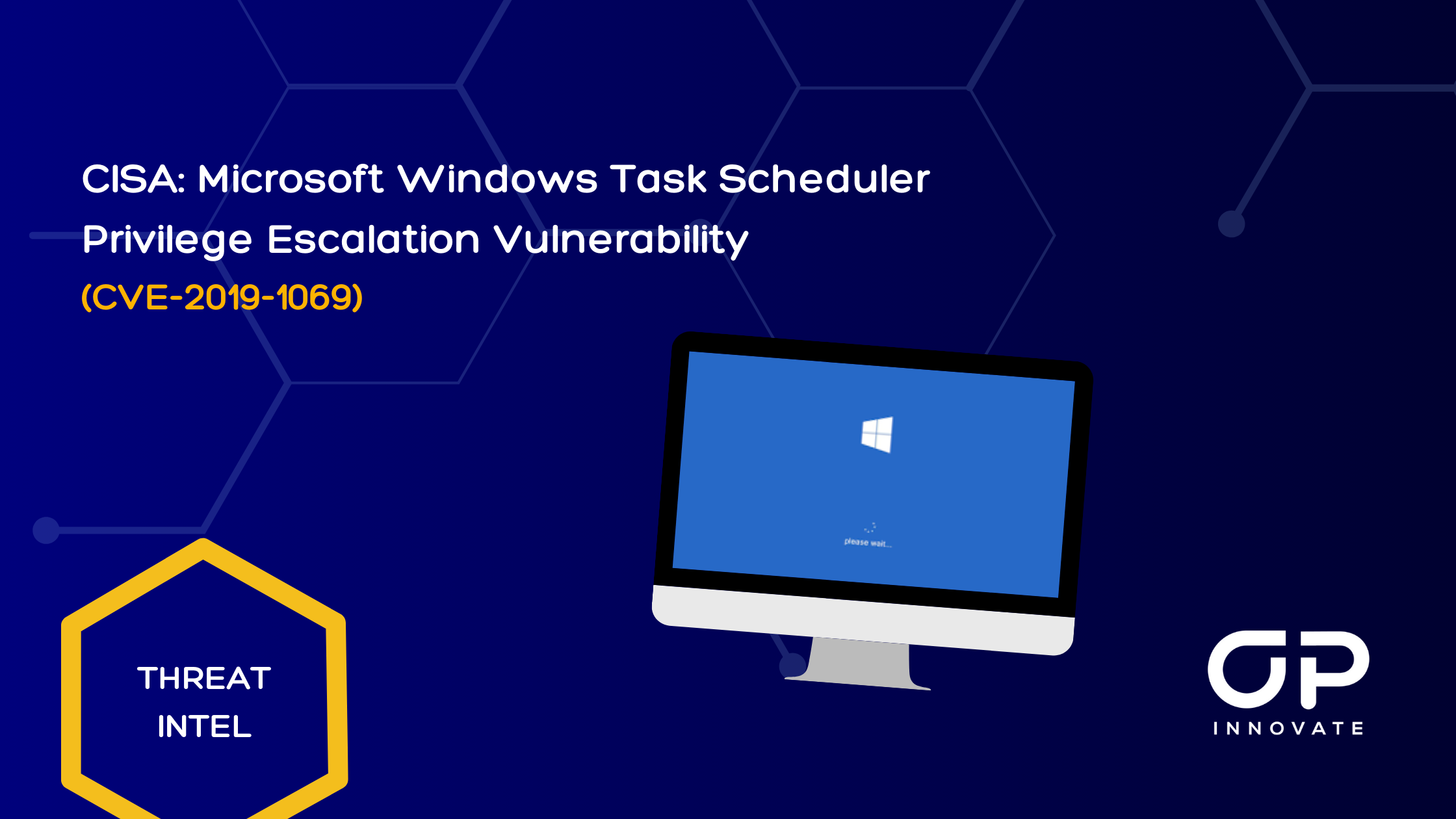CVE-2019-1069 is a Privilege Escalation Vulnerability in Microsoft Windows Task Scheduler, stemming from improper handling of user permissions. This vulnerability allows a local attacker to escalate their privileges from a standard user account to an administrator level, enabling them to take full control of the affected system. The vulnerability has been actively exploited in various targeted campaigns, particularly in combination with other exploits as part of multi-stage attacks.
Vulnerability Details:
- CVE ID: CVE-2019-1069
- Affected Software: Microsoft Windows (various versions prior to the relevant security patch).
- Type: Privilege Escalation
- Attack Vector: Local
- Severity: High (CVSS Score: 7.8)
- Impact: Elevation of privileges, leading to full system compromise.
Description:
This vulnerability affects the Task Scheduler service in Microsoft Windows, which is responsible for scheduling tasks on the system. The flaw arises due to improper handling of task permissions, allowing a low-privileged user to execute tasks with elevated privileges. Exploiting this vulnerability enables attackers to gain administrator-level access to the system, which could be used to install programs, view or change data, or create new accounts with full user rights.
Affected Versions:
- Microsoft Windows 10, Windows Server 2016, Windows Server 2019, and earlier versions prior to the release of the May 2019 security patch.
Exploitation Evidence:
CVE-2019-1069 has been actively exploited by attackers, particularly in post-exploitation scenarios. It is often used in combination with other exploits that provide initial access, allowing attackers to escalate privileges and move laterally across networks. It has been widely used by both cybercriminals and state-sponsored groups to achieve persistence and broaden the impact of their attacks.
Impact Assessment:
If successfully exploited, CVE-2019-1069 allows attackers to:
- Elevate Privileges: Attackers can escalate from a regular user to an administrator, giving them full control over the affected system.
- Full System Compromise: With administrator privileges, attackers can execute arbitrary code, install malware, or steal sensitive information.
- Lateral Movement: Attackers can use the compromised system as a foothold to move laterally within the network, accessing additional systems and expanding the scope of the attack.
- Persistence: Elevated privileges provide attackers the ability to install backdoors, manipulate system settings, and maintain long-term access.
Mitigation Recommendations:
- Patch Management:
- Apply the May 2019 security update from Microsoft to all affected Windows systems. This patch addresses the improper permission handling in the Task Scheduler service, preventing privilege escalation.
- Limit Local Privileges:
- Restrict local user privileges and follow the principle of least privilege to minimize the risk of escalation in case of exploitation.
- Network Segmentation:
- Implement network segmentation to isolate critical systems and limit an attacker’s ability to move laterally in case of compromise.
- Enhanced Monitoring:
- Enable and monitor detailed event logs for Task Scheduler activities. Look for any suspicious task creation or modification events that could indicate an exploitation attempt.
- Endpoint Protection:
- Deploy endpoint detection and response (EDR) solutions that can detect privilege escalation attempts and anomalous behavior on the system.
- Incident Response:
- Prepare incident response plans specifically addressing privilege escalation attacks. Ensure that monitoring systems are tuned to detect indicators of privilege abuse and that response teams can quickly isolate compromised systems.
Threat Landscape:
Privilege escalation vulnerabilities, such as CVE-2019-1069, are commonly exploited by attackers in the later stages of an attack. After gaining initial access through phishing, malware, or other exploits, attackers use these vulnerabilities to increase their privileges and gain control over critical systems. Cybercriminal groups and nation-state actors use these exploits to infiltrate high-value targets, gain persistence, and deploy additional malware, including ransomware.
The Task Scheduler has been a frequent target of attackers due to its inherent capabilities to execute tasks with elevated privileges. Exploits targeting this service have been observed in ransomware campaigns, where attackers leverage privilege escalation to disable security controls and encrypt files across the network.
Indicators of Compromise (IoCs):
- Unexpected creation or modification of scheduled tasks without proper authorization.
- Anomalous usage of high-privilege accounts or escalation of privileges by non-administrator users.
- Unexplained system changes, such as the installation of software or the creation of new administrator accounts.
- Logs indicating failed or unusual access attempts to Task Scheduler or related processes.
Conclusion:
CVE-2019-1069 is a critical privilege escalation vulnerability in Microsoft Windows Task Scheduler that allows attackers to gain administrator-level access to the system. This vulnerability has been actively exploited in a variety of attack scenarios, often as part of multi-stage attacks aimed at system compromise, ransomware deployment, or data theft. Immediate patching and stringent access controls are essential to prevent exploitation and mitigate the risks associated with this vulnerability.



